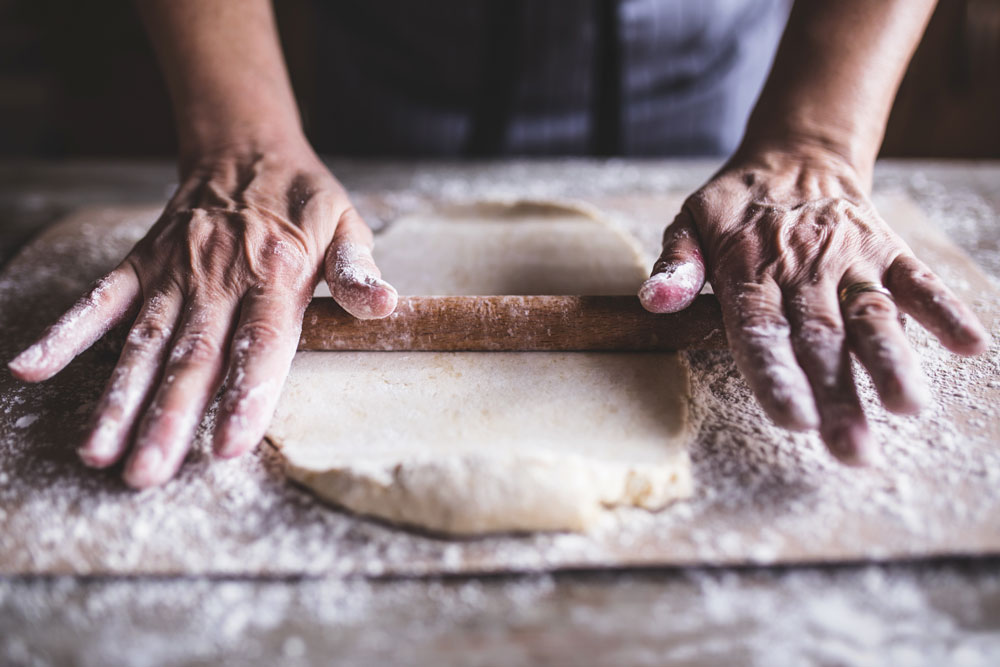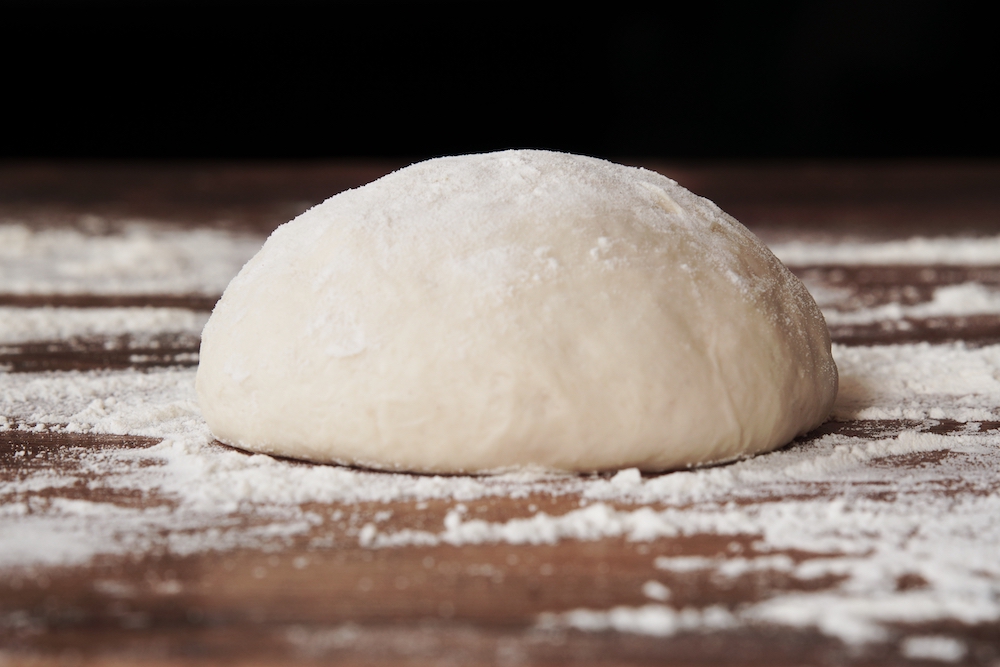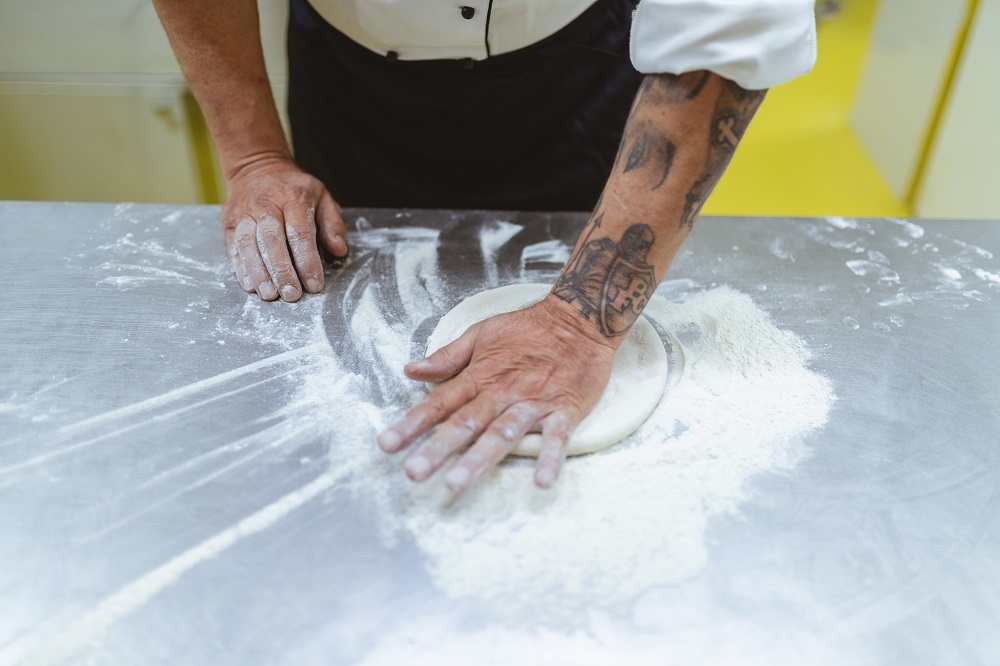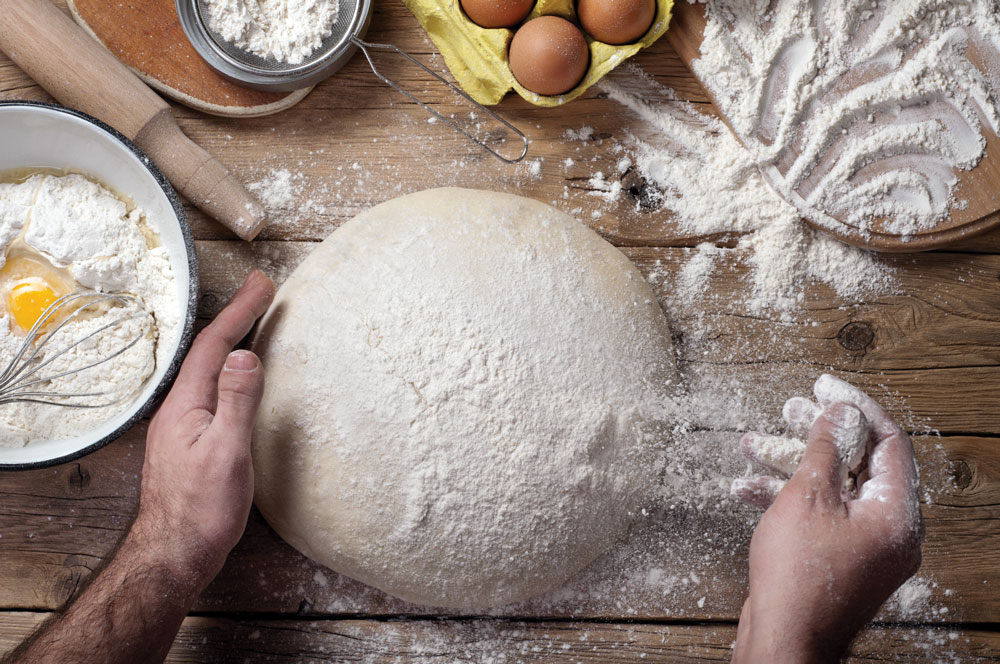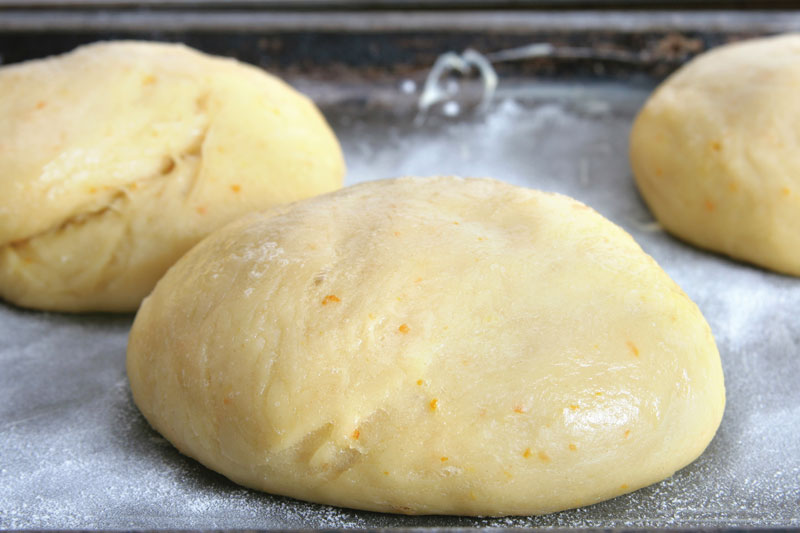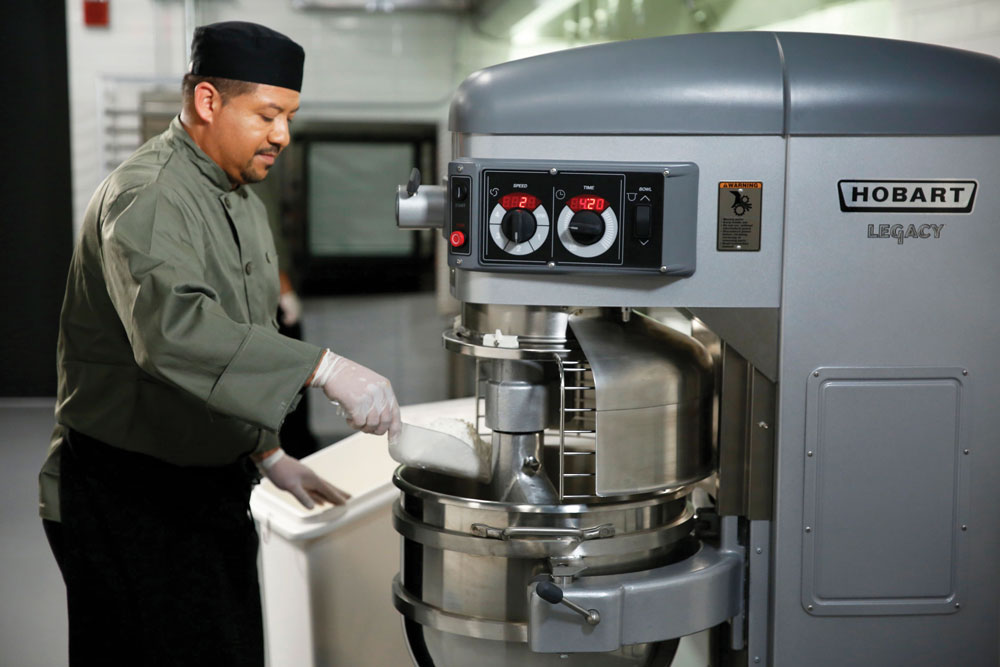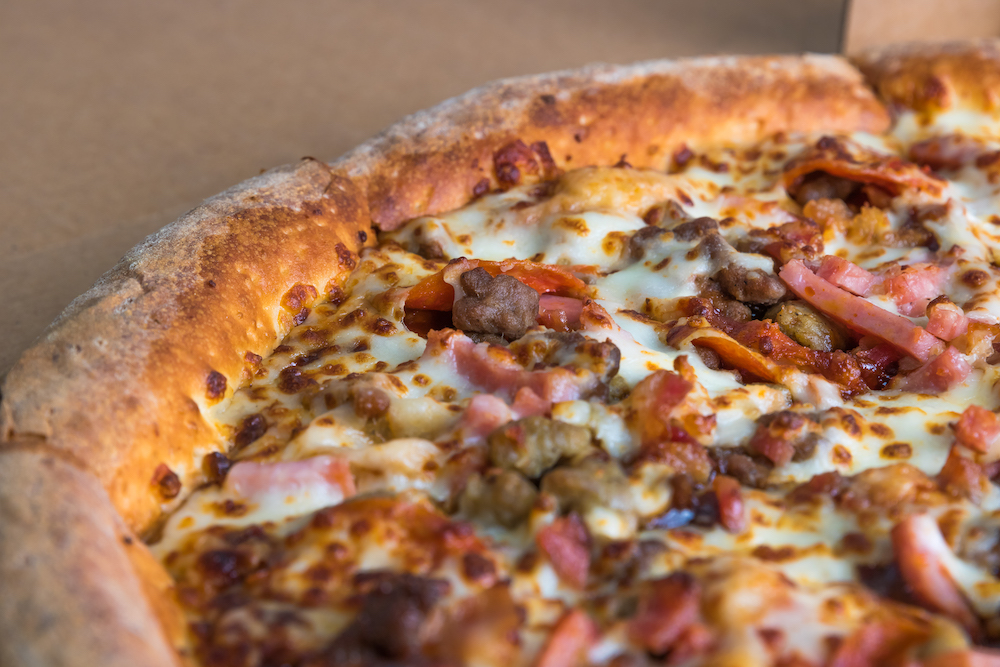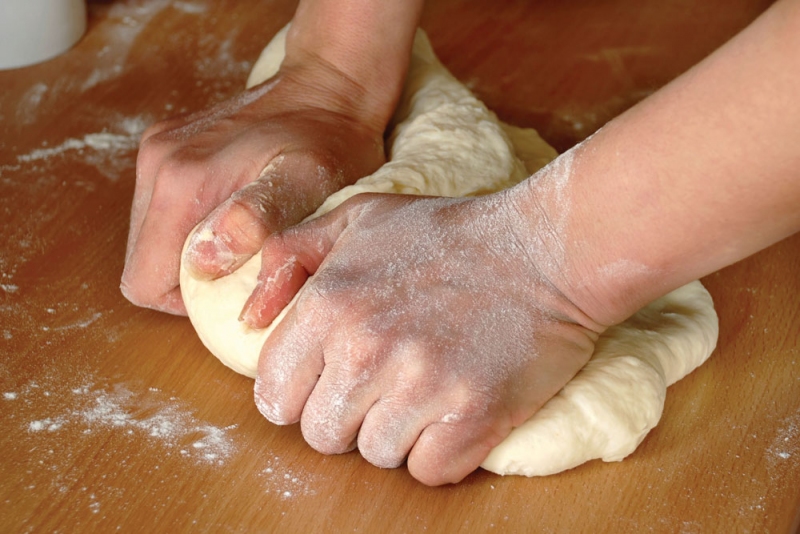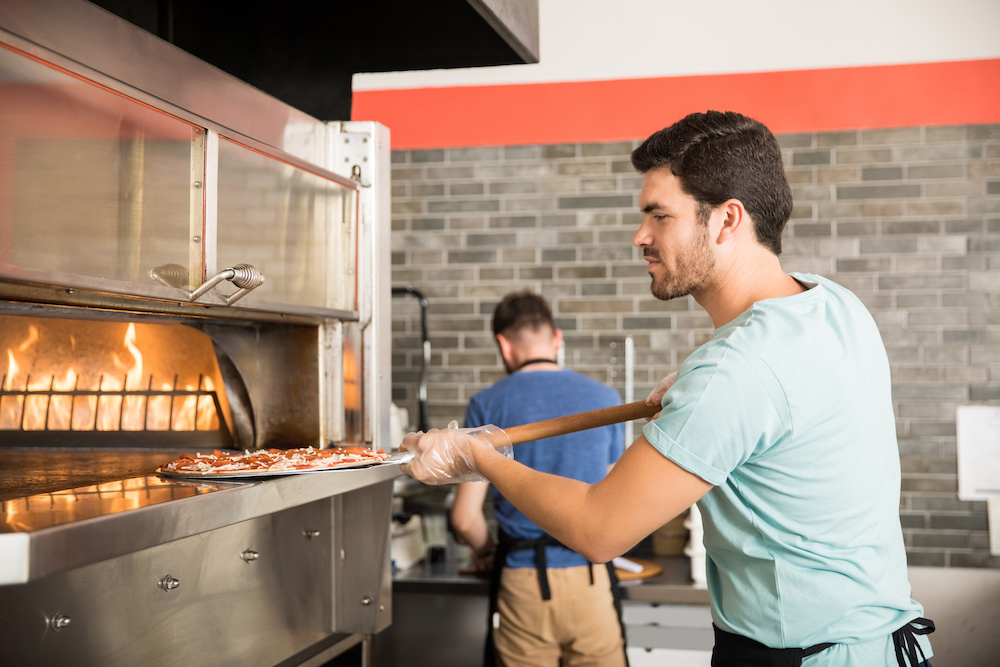Dough management is an all-inclusive term used to encompass everything we do to the dough, from the time we begin mixing the ingredients until it is finally opened into pizza skins or formed into another product (breadsticks, garlic knots, calzones, etc.). Effective dough management means identifying the parameters necessary for managing the dough for a specific purpose. For example, effective dough management could identify the parameters or actions necessary to be taken to achieve a consistent quality dough after five days of refrigerated storage.
To understand dough management, we have to understand the factors responsible for dough formation. Fortunately, there are only two major factors for us to be concerned with when managing our dough: time and temperature. I’ve said it many times before: You cannot have effective dough management without time and temperature controls.
Related: How to achieve the right dough temperature
Managing your dough effectively begins with controlling the temperature of the dough immediately after mixing, scaling and balling, getting it into the cooler in a timely manner, then maintaining a consistent temperature and allowing the dough to warm/temper to a specific predetermined temperature prior to opening the dough balls into skins for making pizzas. Here’s what an effective dough management plan looks like:
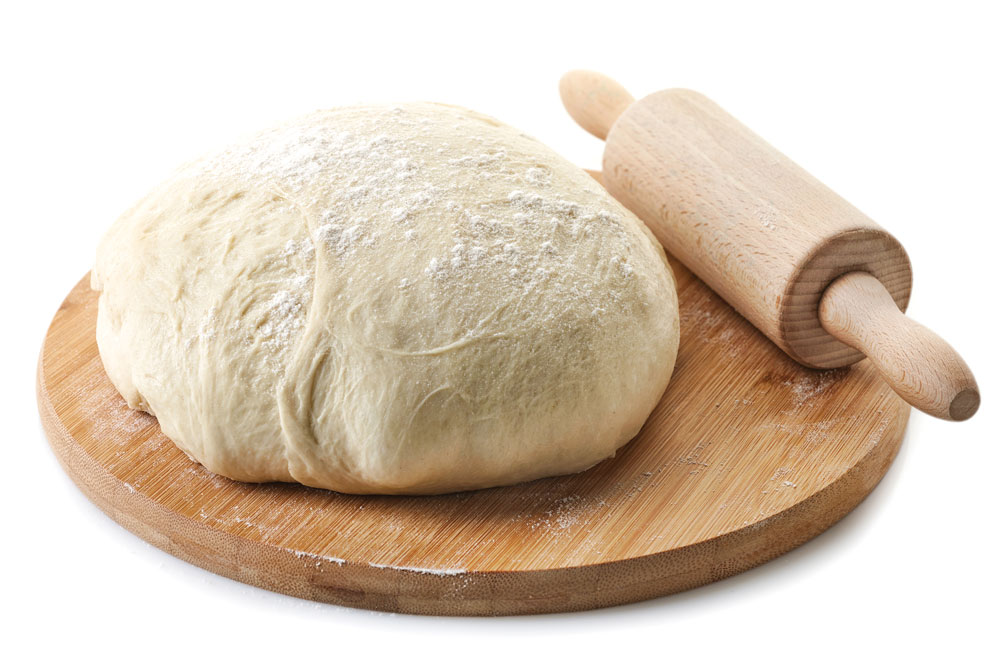 Use water at the correct, predetermined temperature, to create the desired finished dough temperature.
Use water at the correct, predetermined temperature, to create the desired finished dough temperature.- Add water to the mixing bowl first, then add the flour; this will result in a more consistent and shorter mixing time.
- Use the delayed oil addition mixing method. The oil is added to the dough immediately after all the flour has been hydrated (no dry flour is seen at the bottom of the mixing bowl).
- Measure and record the finished dough temperature as soon as the dough is finished mixing.
- Immediately after mixing, scale, ball and box the dough, oil the tops of the dough balls and cross-stack in the cooler within 20 minutes.
- Allow the dough boxes to remain cross-stacked until the dough reaches a predetermined internal temperature (usually about 50º to 55ºF), then down-stack the boxes or cover them to prevent drying.
- Always store the dough boxes in a location within the cooler where temperature fluctuations are minimal (center or back, not near the door).
- After the cold fermentation (cold storage) period, remove dough boxes from the cooler, keeping them covered, and allow to warm to 50º to 55ºF before beginning to open the dough into skins.
Related: How to solve the problem of wet, sticky pizza dough
While this appears straightforward, a lot of mistakes are common in dough management:
- Not using the delayed oil addition mixing method results in a portion of the flour absorbing oil rather than water. The oil-soaked flour will not develop gluten, resulting in a different dough consistency (further aggravated when additional flour or water is added to correct the consistency).
- Cold or cool water is used to make the dough, rather than using water at a specific measured temperature. Water at a specific temperature will significantly increase your ability to achieve a finished dough temperature within your targeted range.
- Failure to time the mixing of the dough can have a significant impact on the finished dough temperature, as the dough heats up during mixing (a result of friction between the dough and the inside of the bowl). For this reason, the dough should always be mixed for a specific time.
- When making a yeast-leavened dough, the yeast goes through what is called a “lag phase,” meaning that it’s relatively slow-acting for a period of time. The goal is to get the dough processed (scaled, balled, boxed, oiled and in the cooler) within 20 minutes after the dough has completed mixing. Why? Dough becomes less dense as it ferments, so it becomes a better insulator, and it will be more difficult to cool at a consistent rate—leading to greater variety in both dough and pizza consistency when the dough is finally used.
- Cross-stacking of the dough boxes is critical to dough success. I’ve often seen operators complaining that their dough was always sticky and bubbling, and that’s due to the boxes not being cross-stacked long enough for the internal temperature of the dough balls to reach the target temperature (typically 50° to 55°F). The dough balls, being warm, will give up moisture, which will condense on the inside of the box if not cross-stacked, resulting in wet dough balls. Additionally, the box will retain heat from the dough balls, allowing for faster fermentation. This usually manifests itself as blown dough. In the worst case I’ve seen, the overfermented dough balls actually lifted the boxes above them, resulting in leaning, then toppling, stacks of dough boxes (to this day I refer to this as the “leaning tower of pizza”).
- Some operators address the problem by reducing the yeast level. While this does address the blown dough issue, it creates another issue: the development of the dreaded “gum line,” that wet, pasta-like layer of dough just beneath the sauce that creates a gummy, chewy consistency in the finished pizza. This results when the yeast is reduced to such a low level that there is insufficient leavening pressure to support the weight of the toppings on the dough during baking, causing the dough to collapse upon itself. Properly cross-stacking the dough boxes prevents this problem.
- For pizzerias with a reach-in, not a walk-in, cooler, offset the ends of the dough boxes as they are placed into the cooler. Since reach-in coolers are not as efficient when filled with dough boxes, it’s a good idea to reduce the target finished dough temperature after mixing by another 5° to 10°F from what might be recommended when using a walk-in cooler.
- Different dough formulations, pizza types and in-store conditions will dictate the best temperature at which to begin opening your dough balls. For most pizzerias, this will be in the 50° to 55°F range. In most cases, you will have a useful dough life of about three hours once you begin opening it into skins.
Ultimately, good dough management practices are not difficult to develop and implement. And, once you have them in place, you’re far less likely to see dough issues cropping up at inopportune moments!
Tom Lehmann was the longtime director of bakery assistance for the American Institute of Baking (AIB) and is now a pizza industry consultant.



